Tips for IP Portfolio Management

What is IP portfolio
An IP portfolio refers to the collection of intellectual property owned by an individual or a company, including patents, trademarks, copyrights, and trade secrets. It serves as a strategic asset for the business, providing protection for the company’s products, processes, and ideas. An IP portfolio can be used to deter potential competitors from infringing on the company’s intellectual property rights and can also be leveraged to generate revenue through licensing agreements or other commercial transactions.
Various mechanisms exist within the patent laws of the United States and other countries that can be leveraged strategically to defer costs while safeguarding rights. These mechanisms may include:
Tip #1: Filing a provisional patent application
A provisional patent application is a type of patent application filed with a patent office to establish an early filing date for an invention. It is not a request for examination and does not automatically grant a patent. Instead, it serves as a placeholder that allows an inventor to secure a filing date and provides them with additional time to develop their invention and evaluate its commercial viability before deciding to pursue a regular patent application.
A provisional patent application does not need to meet the same requirements as a regular patent application, such as formal claims, an oath or declaration, or an information disclosure statement. It can include a detailed description of the invention, any drawings or diagrams, and any other relevant information that the inventor wishes to include.
Once filed, the provisional patent application establishes a priority date for the invention, which can be important for determining the patentability of the invention in the future. Within 12 months of filing the provisional application, the inventor must file a regular patent application, which claims priority to the provisional application. The regular application must include a formal set of claims, an oath or declaration, and other formal requirements. If the regular application is granted, the patent’s term starts from the filing date of the provisional application. Filing a provisional patent application instead of a regular patent application can serve as both a cost and time management tool. By delaying certain formalities in provisional filings, significant expenses can be deferred while preserving the rights of the invention. This provides ample time to evaluate the commercial potential of the invention before incurring further costs by filing a regular U.S. or foreign application. It is important to note that while provisional applications offer a cost-effective option, they still require adequate preparation and should not be taken lightly. Properly drafted and filed provisional applications can provide additional benefits such as an earlier priority date and greater flexibility in amending claims.
Tip #2: The use of pre-filing disclosure grace periods
In addition to filing provisional patent applications, pre-filing disclosure grace periods can also be used to defer patent filing costs. This approach can provide a window of time to publicly disclose the invention before filing a patent application, without losing the ability to later obtain patent protection. It is important to discuss the risks associated with this strategy with a qualified attorney, as relying solely on grace periods can lead to unintended consequences. For instance, there is a potential for intervening rights, even in the U.S., and foreign patent protection may be unavailable due to the lack of grace periods in most foreign jurisdictions. As with any patent strategy, careful consideration of all available options and consultation with legal counsel is recommended.
Tip #3: The use of deferring examination
In some countries, the examination of patent applications is optional; applications remain dormant until the applicant affirmatively requests examination. Applications remain inactive until the applicant specifically requests an examination. Failure to request an examination within a specified period of time may result in the application lapsing. This process is followed in several commercially significant jurisdictions, such as Canada, China, France, Germany, Japan, Russia, and South Korea. It is worth noting that while this option may provide some flexibility in managing the patent prosecution process, it also carries the risk of allowing competitors to operate in the market without infringing on any unexamined patents.
Tip #4: Secrecy as an alternative to patent application filing
One alternative approach to minimize patent filing expenses is to maintain the secrecy of inventions from competitors and the public. In certain situations, trade secret protection may even be more advantageous as it offers potential protection for an indefinite term, unlike patent protection, which becomes available to the public once the patent expires. This method is particularly effective for manufacturing processes, methods, and devices that are not an essential component of a product and may be difficult to replicate or reverse engineer.
Tip #5: Reduce and optimize a number of Trademark Applications
Trademark filings offer a more cost-effective alternative to patent filings, but it is still important to be efficient and strategic when managing trademark assets. While trademark registrations play a crucial role in establishing and safeguarding strong brands, not every product brand, slogan, or logo version requires registration. Instead, it is advisable to focus on registering house brands and in key jurisdictions that are essential for your business, particularly those that follow a “first to file” policy (e.g., most of Asia and South America) and those with a high risk of infringers and squatters (e.g., China, Japan, Russia, South Korea, Taiwan, and Turkey).
Where possible, it is recommended to file single-class trademark applications to reduce filing and registration maintenance fees while ensuring adequate coverage. By adopting these strategies, businesses can efficiently manage their trademark assets while maintaining strong brand protection.
Tip #6: The use of International treaties
International treaties have made efforts to standardize and centralize some IP-filing procedures, which can offer opportunities to enhance efficiency and reduce costs.
For instance, the Patent Cooperation Treaty (PCT) established a centralized system for submitting and conducting a search for a single international patent application. While rights are not granted until patents are approved in individual countries, the PCT process permits a deferral of substantial expenses in international filings.
Similarly, for trademarks, the Madrid Protocol filings via the World Intellectual Property Organization can serve as a valuable cost-management tool compared to multiple direct national filings. Although there are some downsides to Madrid filings, such as more rigid rules for goods and services descriptions, which may result in narrower registrations, and shorter response times in certain jurisdictions, the cost savings may outweigh these drawbacks. Additionally, trademark filings through the European Union Intellectual Property Office can save significant costs compared to multiple direct national filings.
Tip #7: The use of Copyrights or Design Patents
Design patents and copyrights are both types of intellectual property protection but offer different kinds of protection.
A design patent protects the ornamental and non-functional aspects of an object’s appearance. It can be obtained for a new, original, and non-obvious design, regardless of the object’s functionality. Design patents protect the visual appearance of an object and grant exclusive rights to prevent others from making, using, or selling a similar design for up to 15 years from the date of grant. Design patents are primarily concerned with protecting the visual appearance of an object and are ideal for items like jewelry, clothing, and furniture.
On the other hand, copyright protects original works of authorship, such as literary, artistic, or musical works. Copyright protection begins automatically upon the creation of the work and grants the author exclusive rights to reproduce, distribute, display, and perform their work for a set period of time (typically the life of the author plus 70 years). Copyrights protect the expression of an idea, rather than the underlying idea itself, and may cover various forms of creative works like books, music, photographs, and artwork.
Overall, the main difference between design patents and copyrights is that design patents protect the appearance of an object, while copyrights protect original works of authorship. Design patents are a more specialized form of protection and provide a narrower scope of protection than copyrights, which offer more extensive protection over a broader range of creative works.
Compared to utility patents and trademarks, both design patents and copyrights are less expensive options for intellectual property protection. While they may be considered as lesser or narrower forms of protection, they can be a suitable choice for safeguarding innovation, depending on the creation.
.





